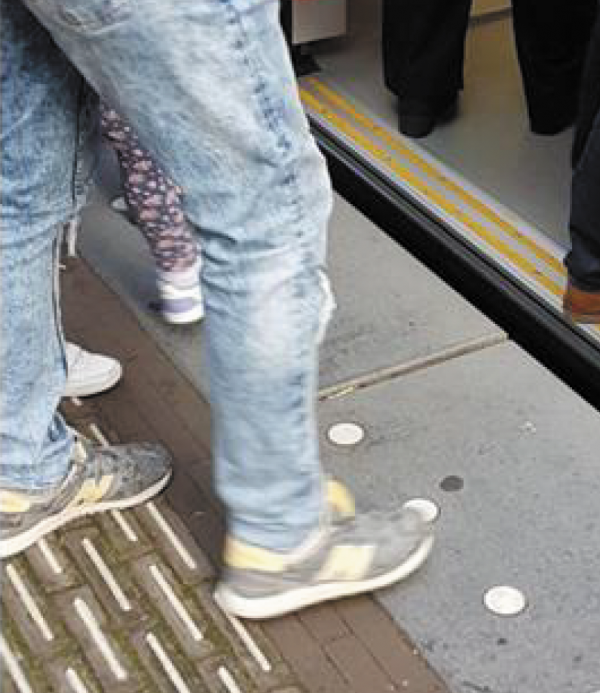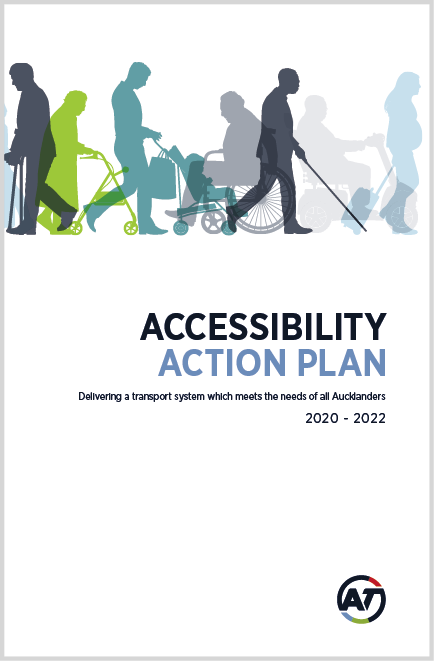Accessibility and movement
Āheitanga me te nuku haeretanga
Urban spaces should be designed so that everyone's needs are met – older people can get where they need to go and feel included.
Make it accessible for everyone
Āheitanga mā te katoa
Accessible urban places:
- give people of all ages and life stages access to work, education, community facilities, and social opportunities
- are culturally inclusive
- provide a sense of belonging - people feel welcome and included and have their needs met
Design tips
Hei whakaaro whakahoahoa
- Prepare an accessibility plan in collaboration with older people (as well as disabled people) before undertaking spatial planning so that local accessibility needs are understood and provided for.
- Consider the demographic and ethnic composition of the community when designing local signage and include appropriate languages, accessible and culturally appropriate font types, and messaging.
- Apply universal design standards to new streetscapes and buildings so that they are accessible for all people. Include features that help with wayfinding and making environments legible for everyone, such as: signalling doorways and access points (for example, by using use colour themes) , orientating people to corners, using facade articulation to highlight building features such as windows and entrances.
- Provide options that enable people to live in a variety of ways based on their cultural and personal needs. Plan for different housing choices that reflect this, such as multigenerational living, papa kainga, living with carers.
- Enable older people to live in proximity to support services, employment opportunities, shops, social and cultural networks.
- Consider the placement of accessible public toilets on a network basis, including the distance between each.
Design for mobility
Whakahoahoatia e māmā ai te nuku haere
Mobility gives people a sense of independence and purpose. Transport options that allow people to move about in the community or between different towns and cities are a key aspect of mobility.
Older people may have mobility restrictions, no access to a car, limited income to run a car, or no family support to assist with transport. When there are no other transport options, older people can be isolated and disconnected from the community and this has a negative impact on their wellbeing.
Design tips
Hei whakaaro whakahoahoa
- Design public transport waiting spaces with seats and signage to make using transport easier for people with restricted mobility. Ensure there is a clear line of sight to approaching vehicles so that passengers can prepare to alight. Consider including: audio messaging, seats with backs and arm rests, protection from the weather, space and access for wheelchairs, sufficient space to avoid crowding and pushing.
- Street width allocation should provide for a range of modes of movement. Main transport routes should provide ample room for mobility scooters, e-bikes, walking and other active modes of transport as well as strategically located mobility car parks.
- Electrical charging points for e-scooters and other e-vehicles should be provided without causing trip hazards. It is also important to consider the quietness of e-vehicles as a safety risk.
- Plan and create movement networks that simplify routes and link them with common destinations that meet people's needs. For example, consider bus routes to access libraries, health care, parks, swimming pools, supermarkets, workplaces and other destinations.

Street crossing - colour and material differentiation, Hamilton.

Accessible Public Transport vehicles and street infrastructure

Accessibility Action plan Auckland Transport.

Web portal showing walking distances to services for older people used to plan senior living, The Hague Netherlands.